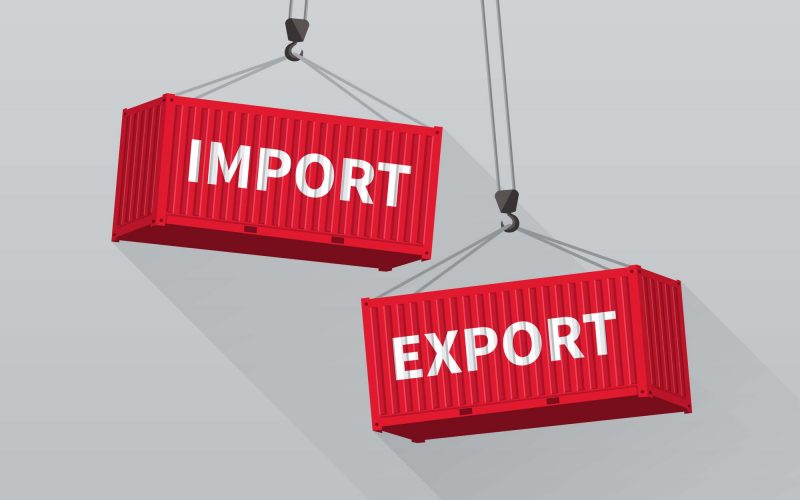The import-export industry presents a range of both challenges and opportunities. Here are some key factors to consider:
Challenges:
- Trade Barriers and Regulations: Import-export activities are subject to various trade barriers, including tariffs, quotas, customs procedures, and regulatory requirements. Navigating these barriers can be complex and time-consuming, requiring a thorough understanding of international trade regulations and compliance procedures.
- Political and Geopolitical Factors: Political instability, changes in government policies, and geopolitical tensions can impact import-export operations. Trade disputes, sanctions, or political unrest in certain regions can disrupt supply chains, create uncertainty, and affect market access.
- Currency Fluctuations: Import-export transactions involve dealing with different currencies. Currency fluctuations can affect the profitability of trade transactions, impacting the pricing, cost calculations, and foreign exchange risk management strategies of importers and exporters.
- Logistics and Supply Chain Management: Managing logistics, transportation, and supply chain operations across borders can be challenging. Factors such as infrastructure limitations, customs delays, documentation requirements, and coordination with multiple stakeholders can add complexity and cost to import-export operations.
- Cultural and Language Differences: Engaging in international trade requires navigating cultural differences and language barriers. Understanding local business practices, norms, and etiquette is essential for building relationships, negotiating contracts, and resolving disputes effectively.
- Market Access and Competition: Gaining market access in foreign countries can be competitive and challenging. Importers and exporters need to identify and understand target markets, tailor their products or services to local preferences, and differentiate themselves from competitors.
- Trade Documentation and Compliance: Import-export operations require dealing with a significant amount of documentation, such as bills of lading, certificates of origin, customs declarations, and export/import licenses. Ensuring accuracy, completeness, and compliance with regulatory requirements can be time-consuming and prone to errors.
- Financing and Payment Risks: International trade transactions often involve payment terms such as letters of credit, international wire transfers, or open account arrangements. Managing payment risks, ensuring timely payments, and mitigating the risk of non-payment or currency fluctuations can be challenging.
- Supply Chain Disruptions: Disruptions in the global supply chain, such as natural disasters, geopolitical conflicts, or pandemics, can have a significant impact on import-export operations. These disruptions can lead to delays, increased costs, and inventory management challenges.
- Cultural and Ethical Considerations: Conducting business across different cultures and ethical frameworks requires sensitivity and understanding. Variations in business practices, negotiation styles, and ethical norms can present challenges in building trust and maintaining strong business relationships.
Opportunities:
- Market Expansion and Growth: Import-export activities provide opportunities for businesses to expand their customer base and reach new markets. Accessing larger markets can lead to increased sales, revenue growth, and business expansion.
- Access to Resources and Inputs: Importing allows businesses to access resources, raw materials, or inputs that may not be available domestically or can be obtained at a lower cost. This can enhance production efficiency, product quality, and competitiveness.
- Diversification and Risk Management: Engaging in import-export trade allows businesses to diversify their customer base, supplier network, and revenue sources. Diversification reduces dependence on a single market or supplier, mitigating risks associated with economic fluctuations or disruptions in specific industries.
- Technological Innovation and Knowledge Transfer: International trade facilitates the exchange of technologies, knowledge, and best practices. Importing enables businesses to adopt advanced technologies and benefit from innovation in other countries, driving productivity improvements and competitive advantages.
- Collaboration and Partnerships: The import-export industry offers opportunities for collaboration and partnerships between businesses across borders. Strategic alliances, joint ventures, or distribution agreements with foreign partners can provide access to new markets, shared resources, and complementary capabilities.
- E-commerce and Digital Platforms: The rise of e-commerce and digital platforms has opened up new avenues for import-export trade. Online marketplaces and digital platforms enable businesses to connect with buyers and sellers globally, reducing barriers to entry and expanding market reach.
- Government Support and Trade Agreements: Governments often provide support and incentives for import-export activities. This can include trade financing, export promotion programs, market intelligence, and participation in trade exhibitions or missions. Additionally, trade agreements and regional economic integration initiatives can create more favorable trading conditions and open up new market opportunities.
- Market Diversification: Import-export activities offer opportunities to diversify the customer base and tap into new markets. Expanding into new geographic locations can help businesses reduce dependence on a single market and capitalize on growing consumer demand.
- Economies of Scale: Engaging in import-export trade can enable businesses to achieve economies of scale by increasing production volumes and spreading fixed costs over a larger customer base. This can result in cost efficiencies and improved profit margins.
- Technological Advancements: Advances in technology, such as digital platforms, e-commerce, and logistics solutions, have transformed the import-export industry. Businesses can leverage technology to streamline operations, improve supply chain visibility, and enhance customer engagement.
- Enhanced Competitiveness: Importing can provide access to competitively priced goods or components, allowing businesses to enhance their competitiveness in the domestic market. Exporting, on the other hand, enables businesses to reach larger customer bases and benefit from economies with higher demand.
- Knowledge and Innovation Exchange: Engaging in international trade facilitates knowledge exchange and innovation. Businesses can learn from different markets, adopt best practices, and collaborate with international partners to foster innovation and improve their products or services.
- Sustainability and Responsible Sourcing: The import-export industry presents opportunities for businesses to adopt sustainable practices and engage in responsible sourcing. Meeting consumer demand for environmentally friendly and ethically sourced products can create a competitive advantage and open up new market segments.
While the import-export industry presents challenges, businesses that navigate these challenges effectively can tap into the opportunities it offers. Flexibility, adaptability, market intelligence, and a strong understanding of international trade dynamics are crucial for success in this dynamic and competitive sector.
SHARE
